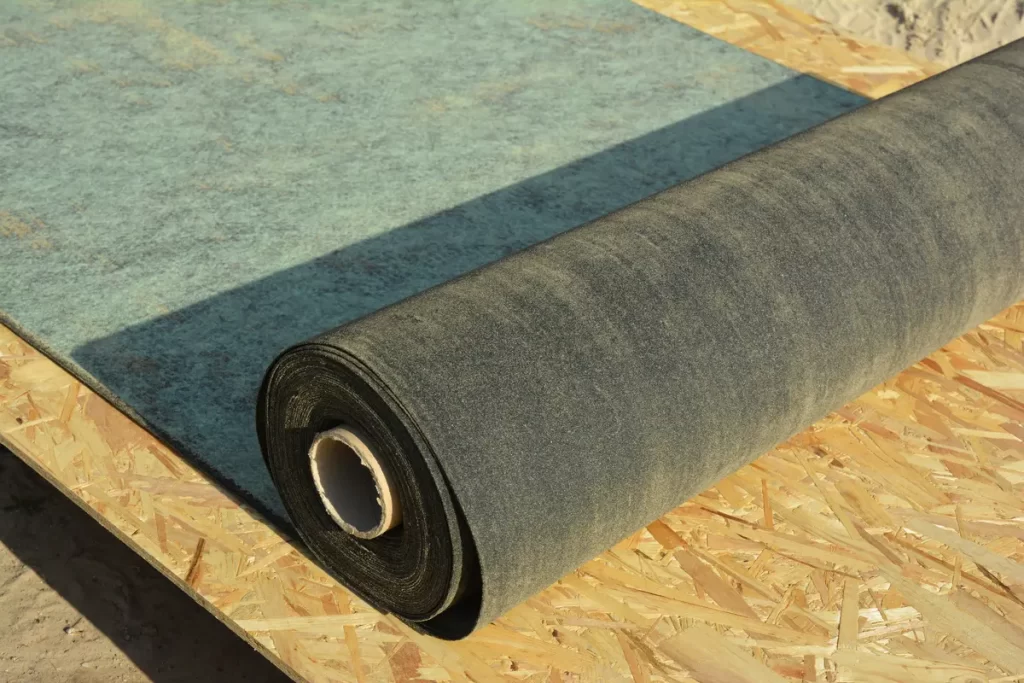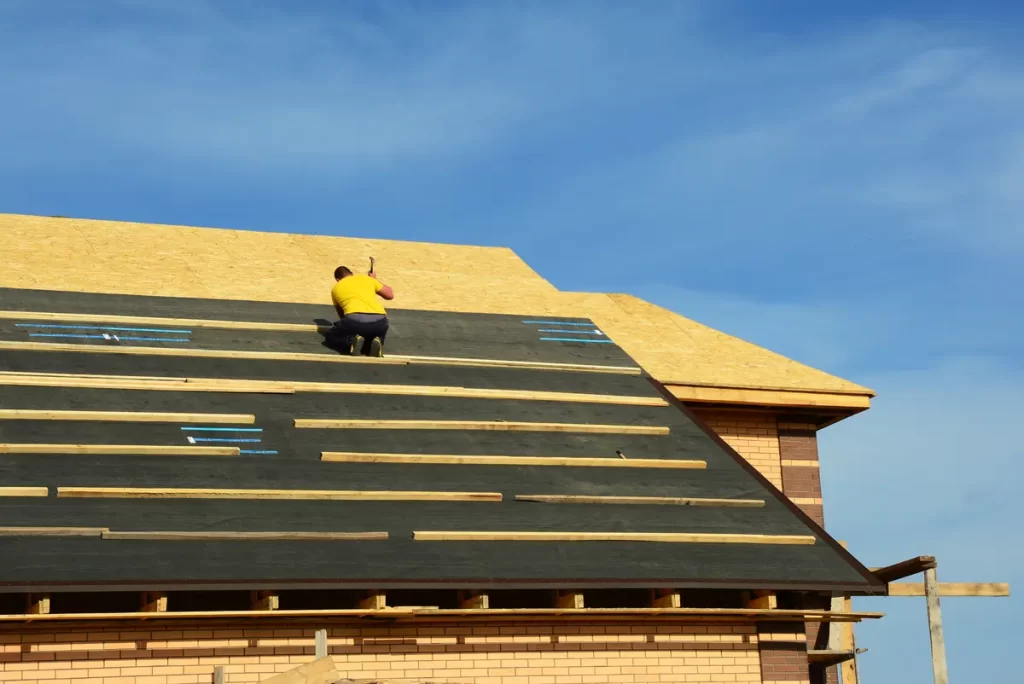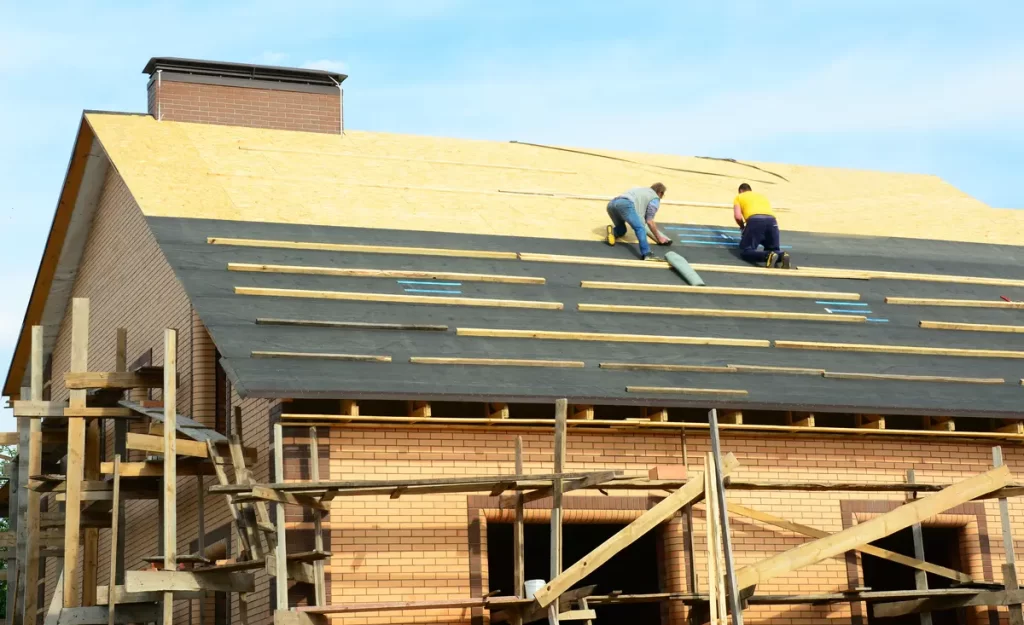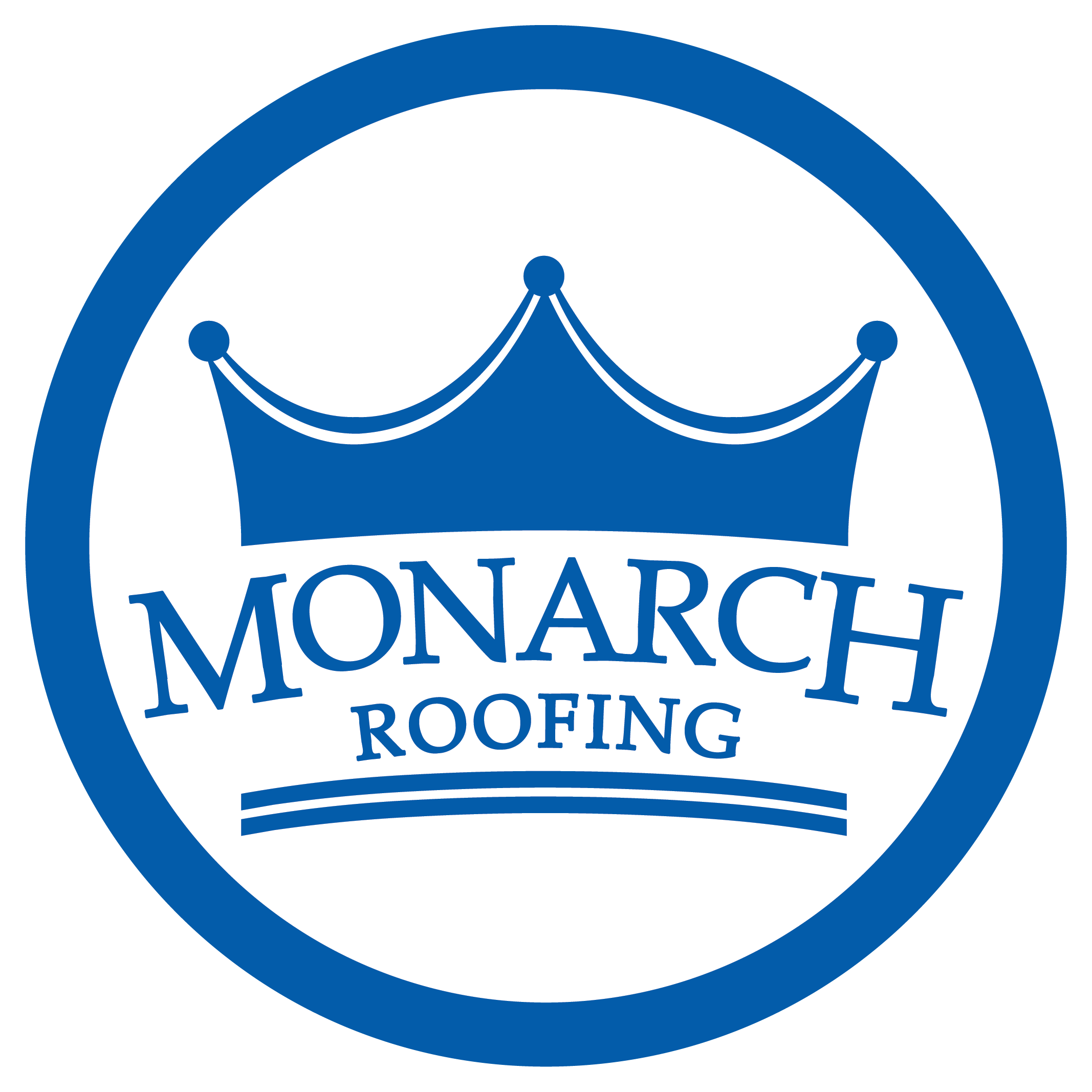When it comes to protecting your home from the elements, the roof is your first line of defense. While shingles and tiles often get the most attention, there’s a vital component that plays a significant role in ensuring your roof’s durability and effectiveness—roof underlayment.
In this blog post, we will explore:
- Synthetic roof underlayment
- Its pros and cons
- How it compares to other types of underlayment
We’ll also guide you through signs that indicate your underlayment needs replacement, provide insights into its installation process, discuss the feasibility of installing new underlayment without a full roof replacement, and cover cost considerations. This guide is designed with homeowners in mind, helping you make informed decisions about your roofing needs.
What is Synthetic Roof Underlayment?

Synthetic roof underlayment is a high-tech, highly efficient material used beneath roofing materials like shingles and tiles. It acts as a protective barrier, preventing moisture from penetrating your home while allowing for breathability. Unlike traditional felt paper, synthetic underlayment is made from engineered polymers, lending it enhanced durability and resistance to various weather conditions.
⭐️ The Benefits of Synthetic Roof Underlayment ⭐️
In recent years, synthetic roof underlayment has become increasingly popular among homeowners and roofing professionals alike. This shift is due to its numerous advantages over traditional materials, which offer long-term performance and additional protection for your home. Below, we delve into the key benefits that make synthetic underlayment an attractive choice for those looking to enhance their roofing system’s durability and efficiency.
- Durability and Longevity: Synthetic underlayment is highly resistant to tearing, cracking, and breaking down over time. Its robust construction allows it to withstand harsh weather conditions, ensuring it lasts significantly longer than traditional felt underlayment.
- Lightweight and Easy to Install: Being lighter than felt, synthetic underlayment is easier to handle and quicker to install, reducing labor costs and installation time.
- Water and Mold Resistance: Its ability to repel water and resist mold growth makes synthetic underlayment a preferred choice for homeowners looking to protect their homes from moisture damage.
- Slip Resistance: Many synthetic underlayments are designed with slip-resistant surfaces, providing safer working conditions for roofers during installation.
- UV Protection: Synthetic underlayment can withstand exposure to sunlight for extended periods without degrading, unlike felt, which deteriorates rapidly under UV rays.
❌ Potential Drawbacks of Synthetic Roof Underlayment ❌
While synthetic roof underlayment offers many compelling benefits, it’s important for homeowners to also understand potential drawbacks associated with this material. Acknowledging these limitations will ensure you make a well-rounded decision that best suits your roofing needs and budget constraints. In the following section, we will outline some of the challenges and considerations you may encounter when opting for synthetic underlayment.
Higher Initial Cost:
While it offers numerous benefits, synthetic underlayment tends to be more expensive upfront compared to traditional felt. However, its durability often offsets the initial investment with long-term savings.
Requires Professional Installation:
Due to its advanced materials and properties, it’s advised to have synthetic underlayment installed by professionals to ensure proper application and performance.
Comparing Synthetic Underlayment to Other Types
When considering roofing solutions, it’s essential to compare synthetic underlayment to traditional alternatives to determine which best suits your home’s needs.
Traditional Felt Underlayment
Felt underlayment is a time-tested material that’s been used in roofing for decades. Made from asphalt-saturated paper or fiberglass, it provides a basic protective layer. However, it lacks the durability and resistance features of synthetic options.
✅ Pros:
- Cost-effective upfront
- Provides basic protection against moisture
❌ Cons:
- Prone to tearing and degradation
- Less durable in extreme weather
- Heavier and harder to install
Rubberized Asphalt Underlayment
This type of underlayment is highly effective for areas prone to ice dams and heavy rain. It contains a mix of rubber polymers and asphalt, providing superior waterproofing.
✅ Pros:
- Exceptional waterproofing
- Self-sealing around nails and fasteners
❌ Cons:
- More expensive than both felt and synthetic
- Heavier and requires skilled installation
Signs Your Roof Underlayment Needs Replacement

Over time, even the most durable underlayments can degrade. Watch for these signs to know when it’s time for a replacement:
- Water Leaks: If you notice water stains on your ceiling or walls, it could indicate a breach in the underlayment.
- Roof Damage: Missing or cracked shingles could expose and damage the underlayment.
- Aging Roof: If your roof is over 20 years old, the underlayment is likely nearing the end of its lifespan.
- Visible Damage: If you or a professional notice any visible tears or wear on the underlayment during an inspection, it’s time for a replacement.
Installing Synthetic Roof Underlayment: 5 Crucial Steps
Installing synthetic roof underlayment is a crucial step in safeguarding your home against environmental factors such as moisture, wind, and temperature extremes. This section will guide you through the installation process, highlighting key considerations and best practices to ensure optimal performance and longevity.
1) Inspection:
Conduct a thorough inspection of your existing roof to assess its condition and plan accordingly.
2) Removal of Old Material:
Carefully remove the old underlayment and any damaged roofing materials.
3) Preparation:
Ensure the roof deck is clean and free of debris before installing the new underlayment.
4) Underlayment Installation:
Starting at the eaves, lay the synthetic underlayment horizontally, overlapping each row by about six inches. Secure it with appropriate fasteners.
5) Shingle or Tile Reinstallation:
Once the underlayment is securely in place, replace the shingles or tiles, ensuring they are properly aligned and fastened.
Can You Install New Underlayment Without a Full Roof Replacement?
In many cases, it’s possible to replace underlayment without a full roof replacement, provided the shingles or tiles are in good condition. This process involves carefully removing and then reinstalling the existing roofing materials to access the underlayment. However, if your roof is nearing the end of its life or has significant damage, a full replacement might be more cost-effective in the long run.
Cost of New Synthetic Roof Underlayment
The cost of synthetic roof underlayment varies depending on factors such as material brand, roof size, and labor costs in your area. On average, homeowners can expect to pay between $0.20 to $0.50 per square foot for the material alone. Including installation, the total cost may range from $1.50 to $3.00 per square foot.
While this may be higher than traditional felt, the durability and long-term benefits of synthetic underlayment make it a worthwhile investment. Keep in mind that prices can fluctuate, so obtaining multiple quotes from reputable contractors is recommended.
Professional Synthetic Roofing Underlayment Installation

Understanding the importance and benefits of synthetic roof underlayment can empower you as a homeowner to make informed decisions about maintaining and protecting your home. With its superior durability, moisture resistance, and ease of installation, synthetic underlayment stands out as a reliable choice for modern roofs. Whether you’re planning a roof replacement or considering an upgrade to your current underlayment, weighing the pros and cons alongside your specific needs will guide you toward the best decision.
For further guidance, consider consulting a professional roofing contractor who can assess your roof’s condition and recommend the optimal approach. Investing in quality underlayment today can save you headaches and expenses down the road, ensuring your home remains safe and sound against the elements for years to come.
Reach out to your trusted roofing contractors at Monarch today to get the support you deserve!





